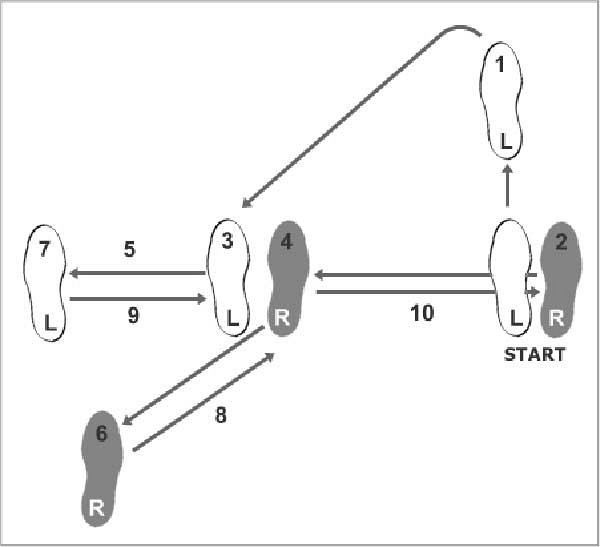
The idea is to work on material from A catalogue of steps, a project which coincides with Diary of an Image a month-long platform focusing on my work and artistic practices, which will be presented by Danspace Project in New York City in May and June of 2014.
A catalogue of steps is an evolving collection of post-archival choreographic fragments, with accompanying taxonomy. A living archive manifested through physical practice by a group of dancers, it is a conceptual reframing of an ever-changing selection of fragments, culled from videos of my work from 1990 to 2004. The chronologically enumerated fragments, of which there are over 300, last anywhere from 10 seconds to up to 4 minutes. They are classified through an invented taxonomy, that names the source or approach to movement, the number of people it was meant to be for, the way it organises space, its stylistic references, tools, objects, etc. The taxonomy is based on completely subjective details – what I could remember of what I was trying to achieve then, what is evident on the video, what I know now that I could not see before, and maybe even what could have happened, but never did.
A catalogue of steps is a work that is made to be visited over time in places like botanic gardens, museums, dance studios, libraries, galleries – places that already house other types of collections – rather than being set up as venue-specific or theatrical performances.
Without trying to recreate the original performance, nor reproduce its meaning or aboutness, yet being informed and softened up exactly by this, the performers and I are aiming to retain the so-called formal impact of Choreography. Choreography in this case being the writing of movement(s) or actions, specifically those inscribed by, or on, or in, the human body – yet distanced from the practice of dance as a system of specifically coded linguistic transmission.
To do this, the performers and I learn, practise, accumulate, compare, repeat, the fragments. We do this while leaving behind as much contextual information as possible (music, costume, props, lighting, camera angle, architectural or spatial reference). How much can we remove without it disappearing, is our test. This act of stripping away is not in order to reduce the dances to an essence, and not purify them either. What it does, is what I am trying to find out. What it gives off, or activates, in terms of image, identity, representation. How does movement move me, you, us, someone.
A catalogue of steps does not aim to produce authenticity, the old work’s timely context, nor its various meanings. Strictly not nostalgic, the process of passing on the stripped down fragments has an important effect on our studio process, and is altering the purpose of learning choreography altogether. Rather than the studio process being directed towards the creation of a singular work with a specific outcome, the learned fragments are becoming part of a larger conversation, and marking a new approach to the (artistic) processes of learning and teaching choreography, and of authorship and sharing.
During the Field Project we will learn fragments and study the taxonomy. We will use my work as a case study. We will talk and write a lot. This is a way I have invented for myself to deal with my own history-making. It's a working description of what an archive would be for me, and what effect that archive-making has on my notions of dance and choreography... or maybe just how to document a work beyond its videographic representation, and having fun doing it.
Please bring your laptop!
DD Dorvillier